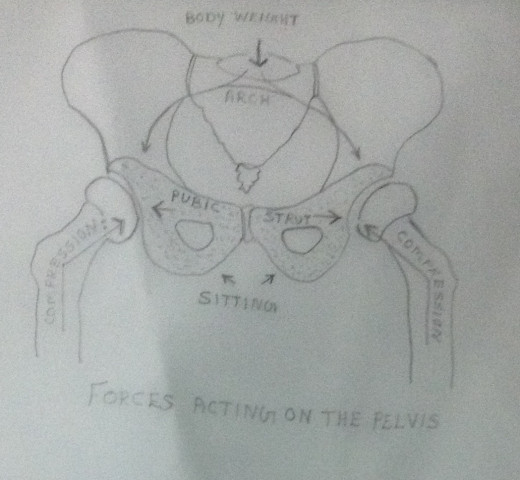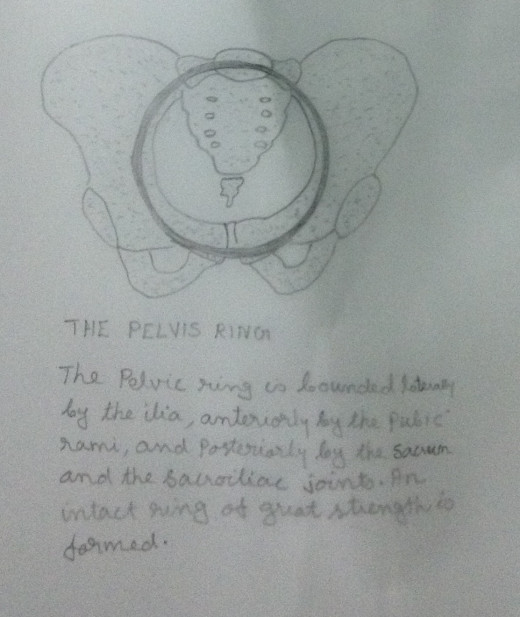Back Pain after Preganancy - Treatment #1

Introduction
Most of the ladies experience various physical problems, especially back pain, during and after delivery. More than 50% of women complain of back pain during the period of pregnancy itself. This pain usually goes off after a short interval, but comes back again. Women who had back pain before or during pregnancy are more likely to have back pain, in one way or other, even after delivery. During pregnancy, her body is subjected to various physical changes. Some of these physical changes have an adverse effect on the body mechanisms which leads to aches and pains at different parts of the body. Some of these physical changes lead to back pain. This is also the same in the case of a mother who has given birth to a child recently.



Physical changes during pregnancy
Some of the physical changes that are responsible for the low back pain are discussed herein.
- During pregnancy the uterus gets stretched. The stretched uterus stretches the abdominal muscles. The stretched abdominal muscles lose its normal strength and tone. The stretched uterus causes much strain to the back spinal extension muscles and the low back. Hence the back pain. Even after the child birth the weakness and the hypotonicity of the abdominal muscles remains the same. Hence back pain continues to remain. Abdominal muscle strengthening exercises need to be done during the post natal period.
- The weakness and the hypotonicity of the abdominal muscles may lead to improper posture, causing strain to the lumbosacral spine. The incorrect posture exaggerates the lumbar lordosis. The exaggerated lumbar lordosis leads to improper posture causing excess strain at the sacroiliac joint by tipping the pelvis too far back or too far forward. This physical change remains the same even after child birth. Hence the back pain. Abdominal muscle strengthening exercises and pelvic tilt exercises have to be done together with postural correction during the post natal period.
- The harmonic changes during pregnancy may cause osteoporotic changes in the bones. The ligaments that attach the pelvic bones to the spine may get softened and stretched during pregnancy. It will continue as such for 6-12 weeks after delivery and sometimes for the longer periods. When the patient is in the erect standing position, the weight of the body falls on the sacroiliac joints. If these ligaments are not sufficiently strong and taut, the sacroiliac joint may give way and subluxation of the joint may occur. This causes postural abnormalities leading to improper posture. This improper posture causes strain at the sacroiliac joint. The gravid uterus further increases strain at the joint. The ilium may be displaced forward on the sacrum or the sacrum may be displaced forward on the ilium. The forward displacement of the sacrum on the ilium is common after child birth. In both the cases, the displacement may be unilateral or bilateral. Weak, hypotonic and stretched musculature during pregnancy and after child birth may also lead to sacroiliac joint problems. Strengthening exercises to the abdominal muscles and pelvic tilt exercises together with postural correction are needed during the post natal period. If the subluxation of the sacroiliac joint is predominant a brace or a corset may be advised. In some cases, a band of adhesive plaster is applied round the pelvis. The plaster is about 4 inches wide and is put on just below the iliac crests.
All the above mentioned physical problems may cause less stability while carrying out most of the activities of daily living like standing, walking, lying, carrying, rolling over in bed etc. These problems may not disappear immediately after child birth. These problems may continue to exist causing low back instability and strain resulting in low back pain. Proper exercise programs may be carried out to regain the lost strength, flexibility, taut and the tone of the muscles and the ligaments.
Improper routine activities
The improper and careless manner in which the mother carries out the activities of daily living after child birth is also responsible for the prevalence and aggravation of back pain in the post natal period.
- If an epidural injection is given, the pain and tenderness at the site of injection may be present for a few days after delivery. Usually this pain does not lead to back pain. Hot water fomentation helps to relieve this pain.
- The pain may also due to the fact that during delivery one might have used certain muscles which are normally not in use. Pelvic tilt exercises may help.
- The overall exhaustion and the stress at the time of pregnancy and after delivery (while taking care of the new born baby) may cause aches and pains, including back pain.
- The improper posture which the mother adopts to while breast feeding the baby causes strain at the back and at the neck. While breast feeding, bring the baby to one’s breast rather than bending over to the baby. Try different breast feeding positions and adopt the most comfortable and relaxed position which is suitable. The most comfortable and relaxed position varies from individual to individual. Usually side lying position is the most comfortable and relaxed position. While breast feeding, bottle feeding or nursing the baby in the sitting position, sit in the most comfortable chair. Use chairs with arm rest. Use pillows to support the back and the arms (Please refer my earlier article “How to Take Care of Your Back?” in which I have discussed the correct sitting postures).
- On the advice of the doctor one can start the exercise program at the earliest. The regime of exercise program includes strengthening exercises to the abdominal and back muscles and also the pelvic tilt exercise. Although there are various exercise programs, the choice of the exercise is very important. Avoid painful and stressful exercises. To start with prefer simple painless exercises. May be slowly progressed to stressful exercises also.
- Care should be taken while handling the baby. Do not take the baby with the stretched arms. While taking, the baby is brought close to the chest and then lift. Avoid twisting. While taking the child from the floor, bend the knees and squat down. Bring the child close to the body and take the child. Now slowly come up with the child close to the chest by straightening the knees. Now the strain at the low back is relieved. It is better to carry the child using a ‘front pack’ while walking.
The simplest form of exercise in the post natal period is walking. Walking can be started almost immediately after vaginal delivery or cesarean. Speed of walking, distance of walking and duration of walking may be progressed slowly.
Bladder Problems
After delivery, problems such as infections, back pain, a leaky bladder, incontinence and painful intercourse are very common. If one has a leaky bladder, she has to strengthen the muscles around the bladder, vagina and perineum. Pelvic floor exercises are very helpful for strengthening these muscles. Simple exercise which can be done at anytime and anywhere is explained herein. While she is sitting, standing or lying she can do this exercise by squeezing the buttock muscles (contracting the gluteal muscles) and then trying to draw in the anal opening and the vaginal opening upwards. This exercise is done slowly and rhythmically and till a maximum contraction is felt. Hold it in the maximum contracted position for 10 seconds. Then release it slowly. Repeat the exercise 10 times and 3-4 times daily. The bladder exercise can be done by holding back or stopping the urination in between and then proceeding. This can also be done by slowing down the speed of the flow of urine while urinating.








